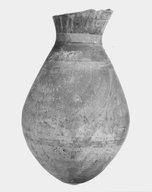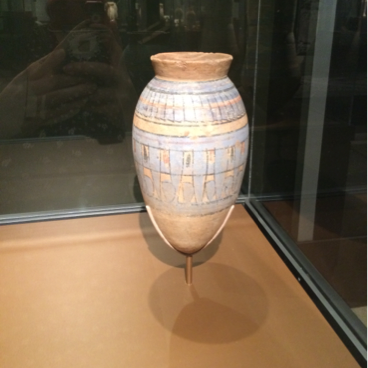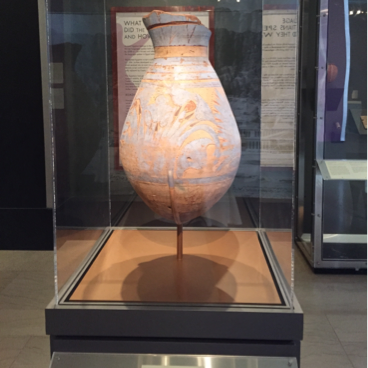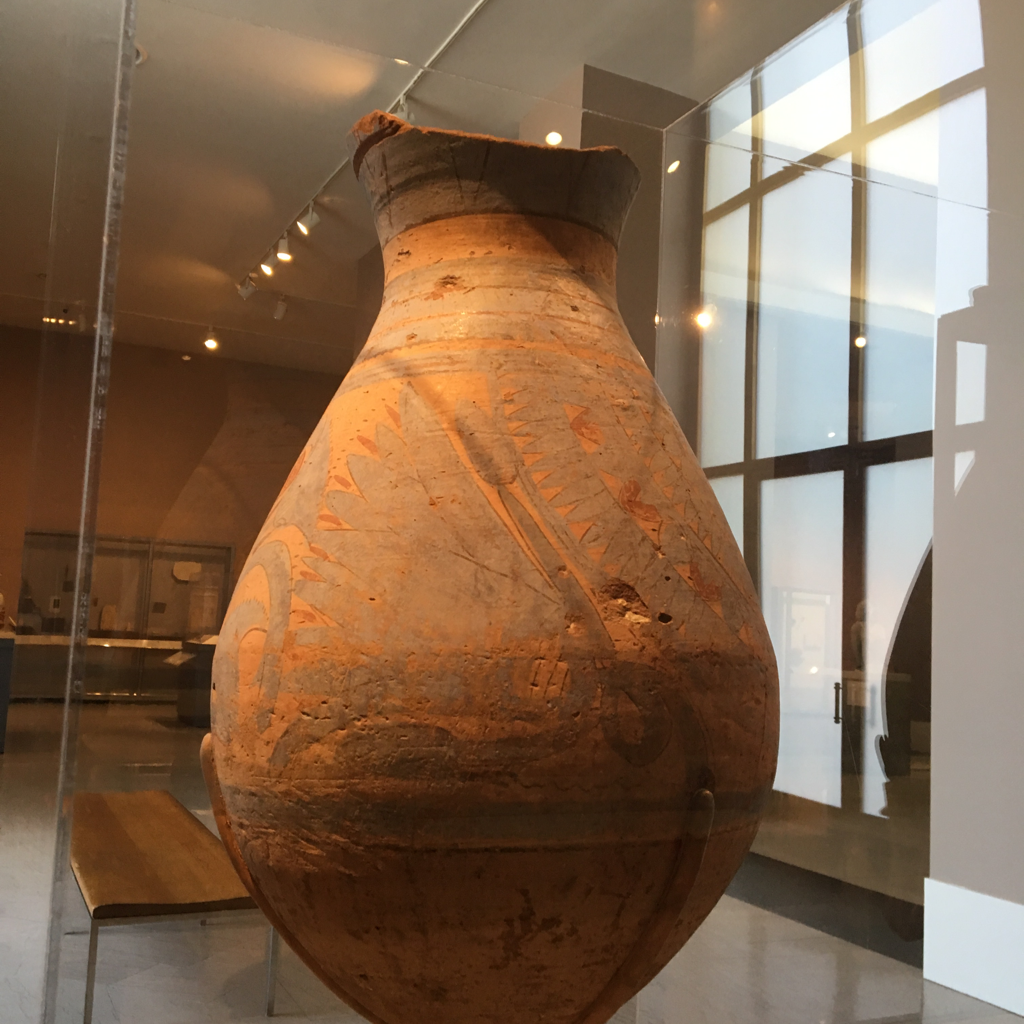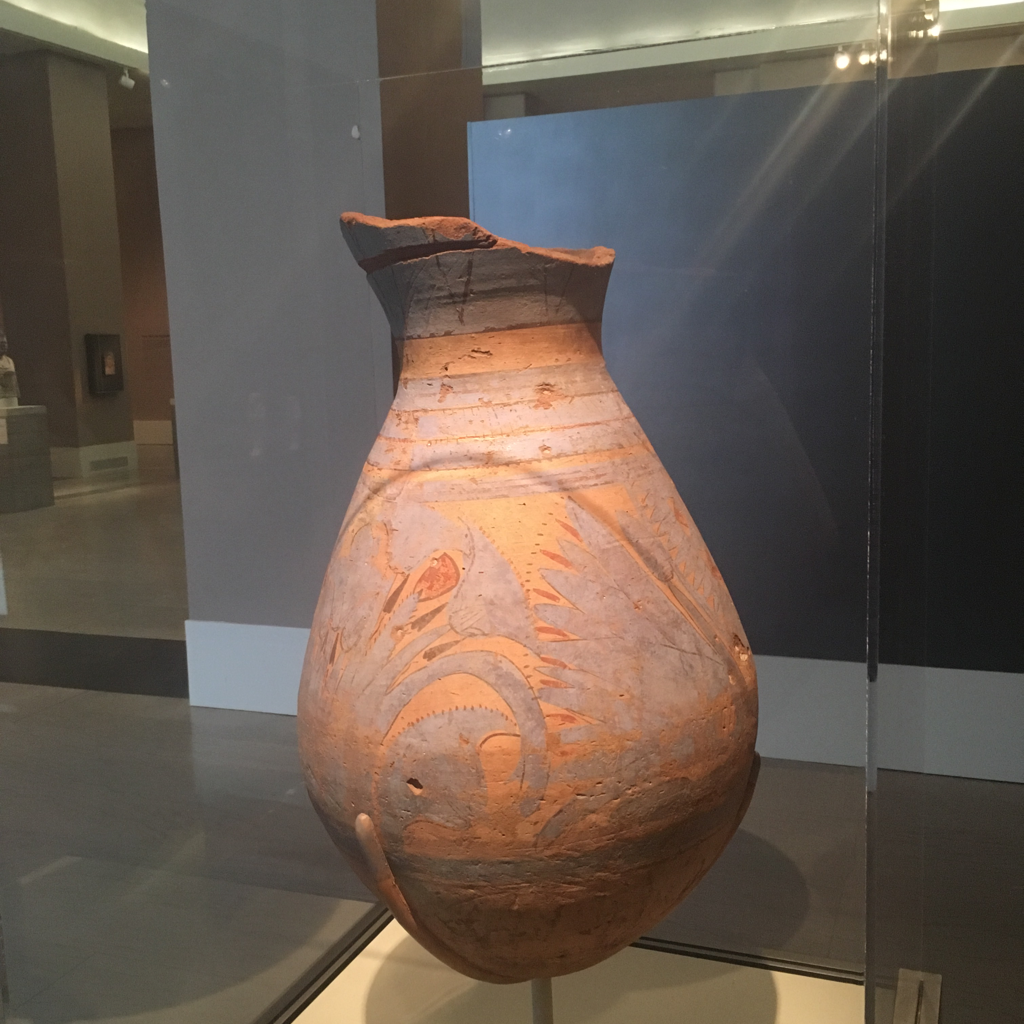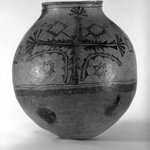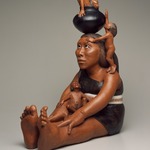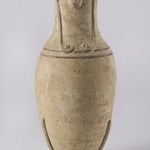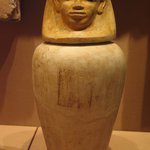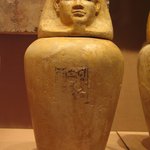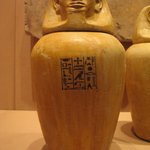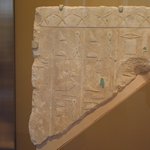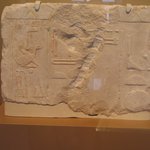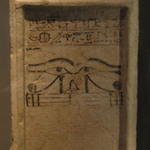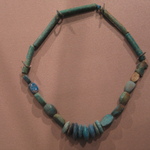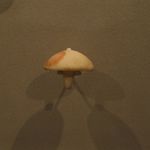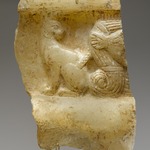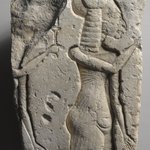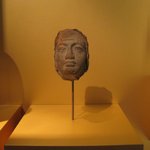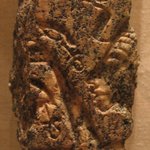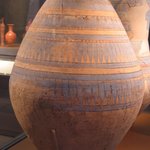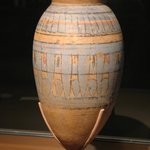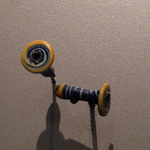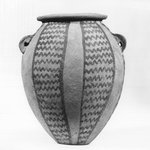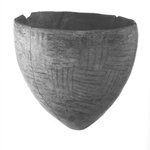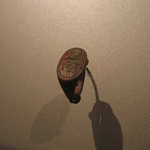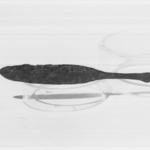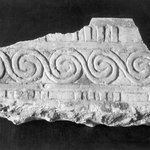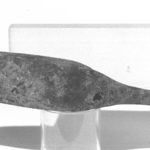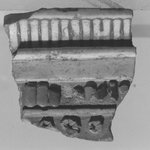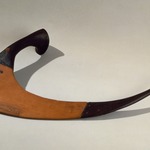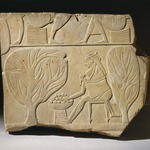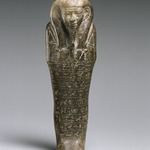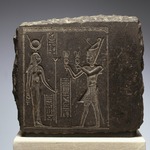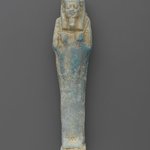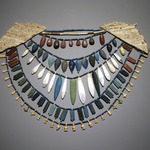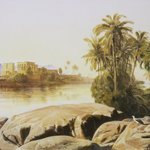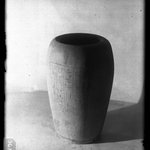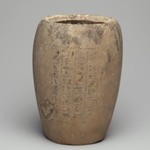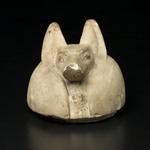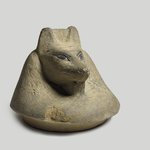

Grain Storage Jar with Blue-Painted Lotus Plants and Floral Collar, ca. 1353–1329 B.C.E. Clay, pigment, 27 9/16 × Diam. 15 5/8 in. (70 × 39.7 cm). Brooklyn Museum, Gift of Evangeline Wilbour Blashfield, Theodora Wilbour, and Victor Wilbour honoring the wishes of their mother, Charlotte Beebe Wilbour, as a memorial to their father, Charles Edwin Wilbour, 16.245. Creative Commons-BY (Photo: Brooklyn Museum, CUR.16.245_NegF_print_bw.jpg)

Grain Storage Jar with Blue-Painted Lotus Plants and Floral Collar, ca. 1353–1329 B.C.E. Clay, pigment, 27 9/16 × Diam. 15 5/8 in. (70 × 39.7 cm). Brooklyn Museum, Gift of Evangeline Wilbour Blashfield, Theodora Wilbour, and Victor Wilbour honoring the wishes of their mother, Charlotte Beebe Wilbour, as a memorial to their father, Charles Edwin Wilbour, 16.245. Creative Commons-BY (Photo: Brooklyn Museum, CUR.16.245_NegE_print_bw.jpg)
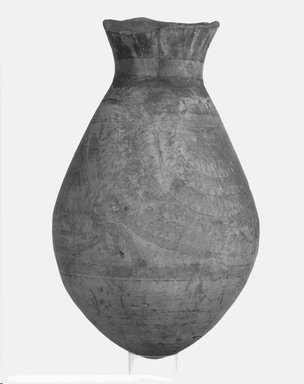
Grain Storage Jar with Blue-Painted Lotus Plants and Floral Collar, ca. 1353–1329 B.C.E. Clay, pigment, 27 9/16 × Diam. 15 5/8 in. (70 × 39.7 cm). Brooklyn Museum, Gift of Evangeline Wilbour Blashfield, Theodora Wilbour, and Victor Wilbour honoring the wishes of their mother, Charlotte Beebe Wilbour, as a memorial to their father, Charles Edwin Wilbour, 16.245. Creative Commons-BY (Photo: Brooklyn Museum, CUR.16.245_NegD_print_bw.jpg)
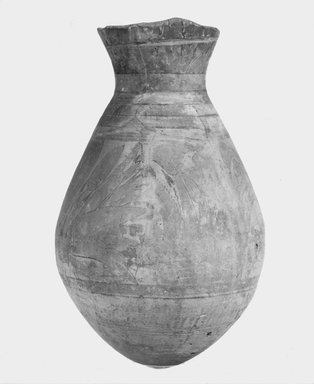
Grain Storage Jar with Blue-Painted Lotus Plants and Floral Collar, ca. 1353–1329 B.C.E. Clay, pigment, 27 9/16 × Diam. 15 5/8 in. (70 × 39.7 cm). Brooklyn Museum, Gift of Evangeline Wilbour Blashfield, Theodora Wilbour, and Victor Wilbour honoring the wishes of their mother, Charlotte Beebe Wilbour, as a memorial to their father, Charles Edwin Wilbour, 16.245. Creative Commons-BY (Photo: Brooklyn Museum, CUR.16.245_NegC_print_bw.jpg)

Grain Storage Jar with Blue-Painted Lotus Plants and Floral Collar, ca. 1353–1329 B.C.E. Clay, pigment, 27 9/16 × Diam. 15 5/8 in. (70 × 39.7 cm). Brooklyn Museum, Gift of Evangeline Wilbour Blashfield, Theodora Wilbour, and Victor Wilbour honoring the wishes of their mother, Charlotte Beebe Wilbour, as a memorial to their father, Charles Edwin Wilbour, 16.245. Creative Commons-BY (Photo: Brooklyn Museum, CUR.16.245_NegB_print_bw.jpg)

Grain Storage Jar with Blue-Painted Lotus Plants and Floral Collar, ca. 1353–1329 B.C.E. Clay, pigment, 27 9/16 × Diam. 15 5/8 in. (70 × 39.7 cm). Brooklyn Museum, Gift of Evangeline Wilbour Blashfield, Theodora Wilbour, and Victor Wilbour honoring the wishes of their mother, Charlotte Beebe Wilbour, as a memorial to their father, Charles Edwin Wilbour, 16.245. Creative Commons-BY (Photo: Brooklyn Museum, CUR.16.245_NegA_print_bw.jpg)

Grain Storage Jar with Blue-Painted Lotus Plants and Floral Collar, ca. 1353–1329 B.C.E. Clay, pigment, 27 9/16 × Diam. 15 5/8 in. (70 × 39.7 cm). Brooklyn Museum, Gift of Evangeline Wilbour Blashfield, Theodora Wilbour, and Victor Wilbour honoring the wishes of their mother, Charlotte Beebe Wilbour, as a memorial to their father, Charles Edwin Wilbour, 16.245. Creative Commons-BY (Photo: Brooklyn Museum, CUR.16.245_erg456.jpg)
Grain Storage Jar with Blue-Painted Lotus Plants and Floral Collar
Egyptian, Classical, Ancient Near Eastern Art
The most innovative pottery of the Eighteenth Dynasty—so-called bluepainted ware—began under Thutmose III.
The pastel pigment was made from groundup blue frit, a mixture of cobalt and alum. Initially, potters relied on blue paint to accentuate small details, such as the grape cluster hanging from a vine on the wine jar in this case. Over time, though, artists began to use blue paint for more complex designs and figures.
